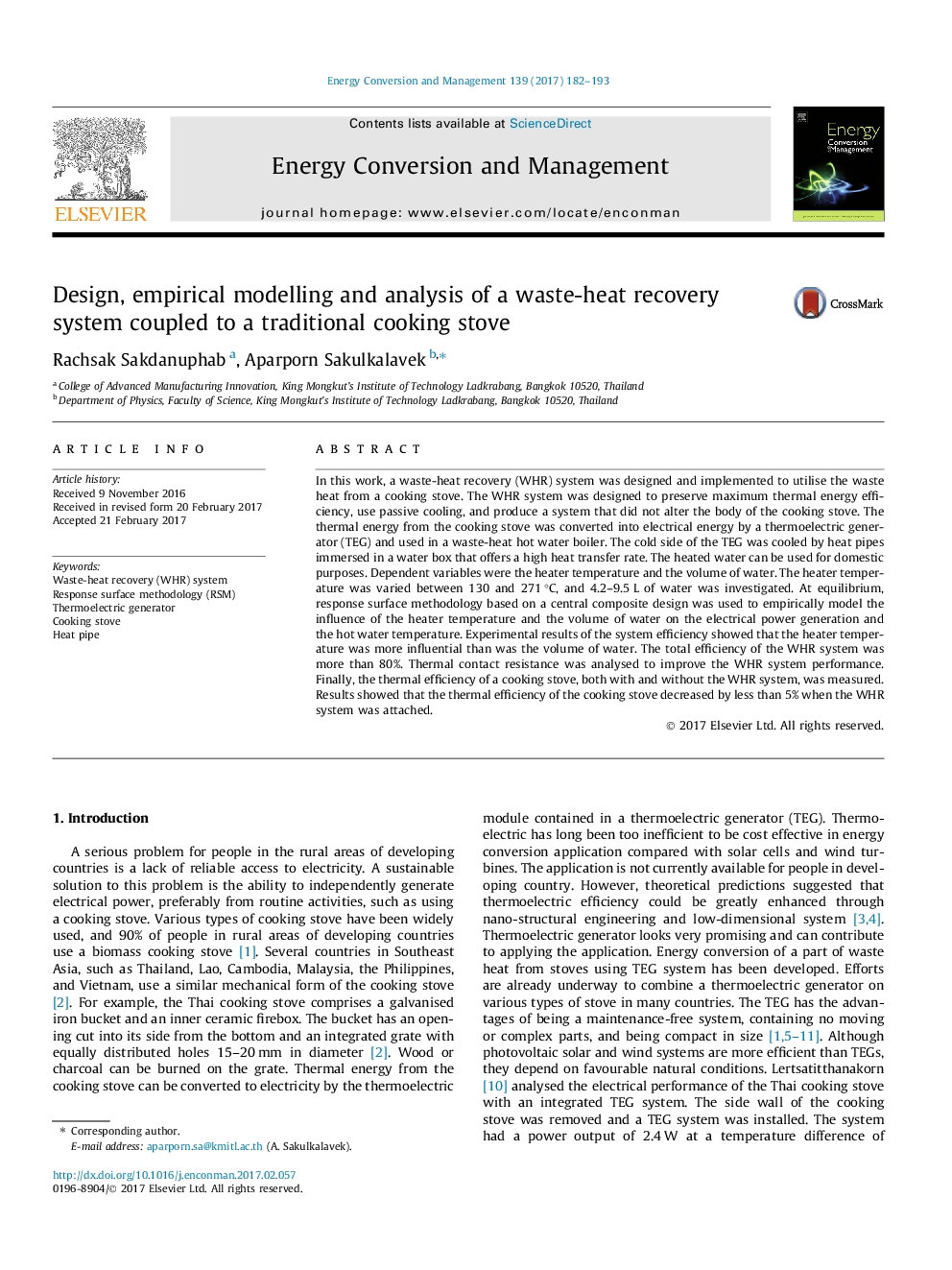| Article ID | Journal | Published Year | Pages | File Type |
|---|---|---|---|---|
| 5012890 | Energy Conversion and Management | 2017 | 12 Pages |
Abstract
In this work, a waste-heat recovery (WHR) system was designed and implemented to utilise the waste heat from a cooking stove. The WHR system was designed to preserve maximum thermal energy efficiency, use passive cooling, and produce a system that did not alter the body of the cooking stove. The thermal energy from the cooking stove was converted into electrical energy by a thermoelectric generator (TEG) and used in a waste-heat hot water boiler. The cold side of the TEG was cooled by heat pipes immersed in a water box that offers a high heat transfer rate. The heated water can be used for domestic purposes. Dependent variables were the heater temperature and the volume of water. The heater temperature was varied between 130 and 271 °C, and 4.2-9.5 L of water was investigated. At equilibrium, response surface methodology based on a central composite design was used to empirically model the influence of the heater temperature and the volume of water on the electrical power generation and the hot water temperature. Experimental results of the system efficiency showed that the heater temperature was more influential than was the volume of water. The total efficiency of the WHR system was more than 80%. Thermal contact resistance was analysed to improve the WHR system performance. Finally, the thermal efficiency of a cooking stove, both with and without the WHR system, was measured. Results showed that the thermal efficiency of the cooking stove decreased by less than 5% when the WHR system was attached.
Related Topics
Physical Sciences and Engineering
Energy
Energy (General)
Authors
Rachsak Sakdanuphab, Aparporn Sakulkalavek,
